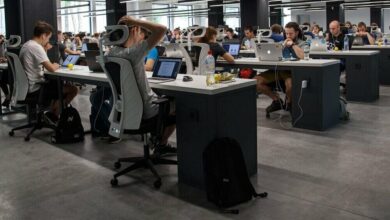
In the times in which we live, the technology manager has become just one of the partners’ interlocutors when addressing technological projects. And within the proposals, the definition of the working model It is one of the common ones and where technology plays an active role.
Chief financial officers (CFOs) are one of the new protagonists of these new technological conversations. And they are clear about it. Hybrid work means better use of resources. In fact, an IWG study supports this reality and establishes that the 81% of CFOs everyone believes that hybrid work represents a saving of resources. So much so that 78% are reducing costs due to the current economic instability.
According to the analysis, 67% of the CFOs participating in the survey plan that their companiescontinue to adopt the hybrid work model in the long termwith a division of the working day between the company headquarters or local office and home over the next five years.
This hybrid work model offers many benefits for employees, such as flexibility, greater work-life balance, and better optimization of the time and resources at their disposal. All of this results in a more motivated, happy and ultimately productive employee.
However, behind these advantages there are also challenges for organizations. The challenge of having the appropriate technology to respond to the demands of workers and achieve a similar user experience both at home when they are teleworking and in the office. And that is where the true crux of the success of these models lies.
Models that have not yet succeeded in Spain
At the moment, the four-day day does not seem to be the model most chosen by Spanish companies. According to a study by Infojobs, half of the companies are against any type of reduction in working hours, regardless of the conditions. Only 19% of the companies that would introduce the measure would carry it out without salary reduction and maintaining the same level of productivity. Of these, the majority have 100% teleworking.
However, 62% of employees would like to access this type of reduction in working hours, considering that their salary would not be reduced, but that their productivity could be increased or maintained.
Furthermore, although 100% teleworking is a modality that is increasingly demanded by new generations, it is not always the solution to all problems. In fact, many remote workers are dissatisfied at work, according to data from a survey conducted by Indeed. The biggest obstacle perceived by this type of workers is the disconnection they have with the objectives, values and unity of the organization. A fifth of these workers also referred to the lack of socialization as a negative factor of teleworking.
The solution, balance and technology
In any case, each organization must value its idiosyncrasies and seek the greatest benefit for its employees, combining technology, human resources, and financial and strategic management. Only in this way will you be able to ensure that the balance, performance and productivity of your staff is adequate for the smooth flow of the business.
Along this path, equipment, monitors, digital signage screens or business management tools take on a key role in turning the selected work model into a success. Technologies that must meet the needs of employees in terms of occupational health and ergonomics, and become another ally for the good future of the business. Are they for your clients?



